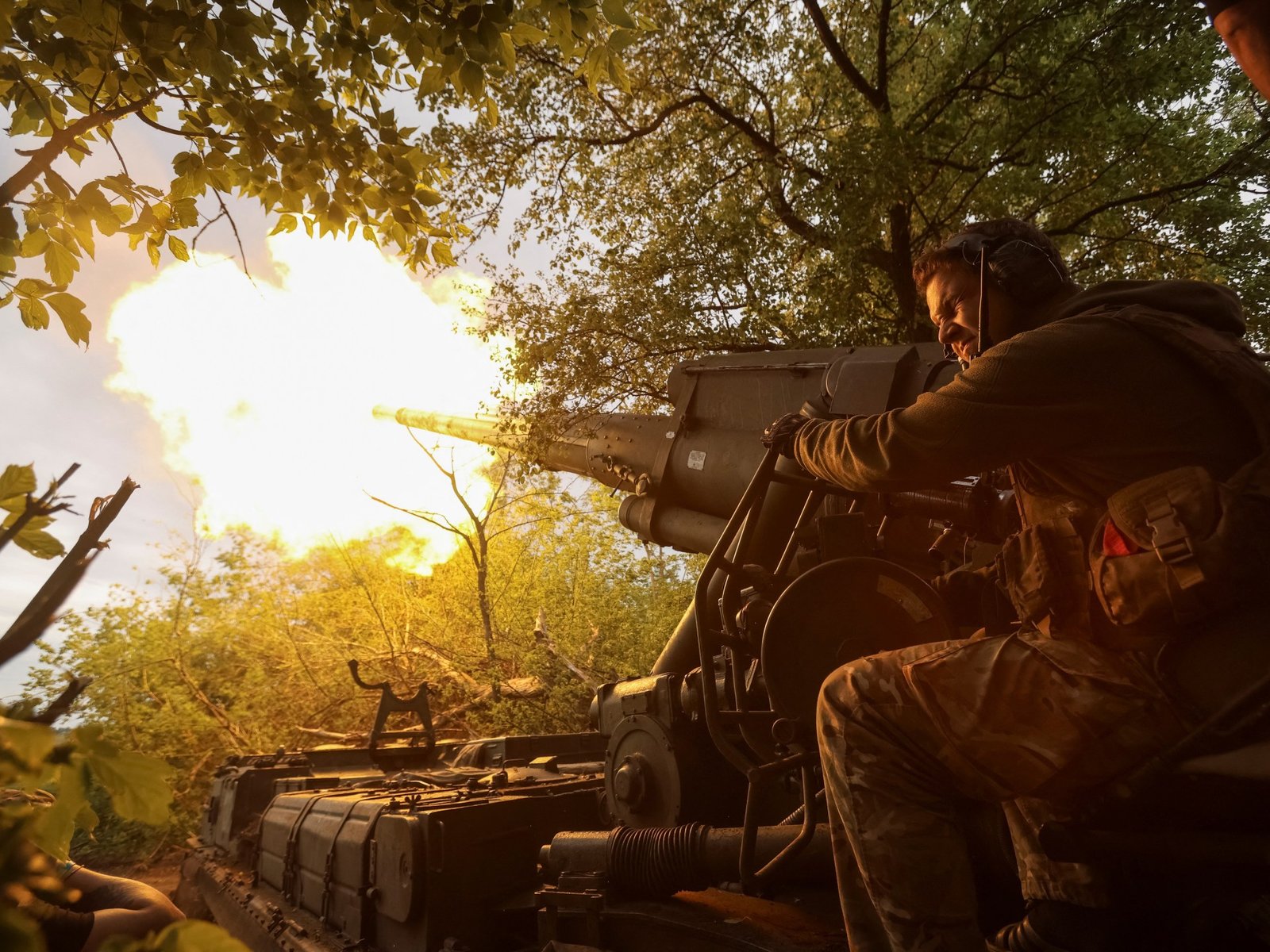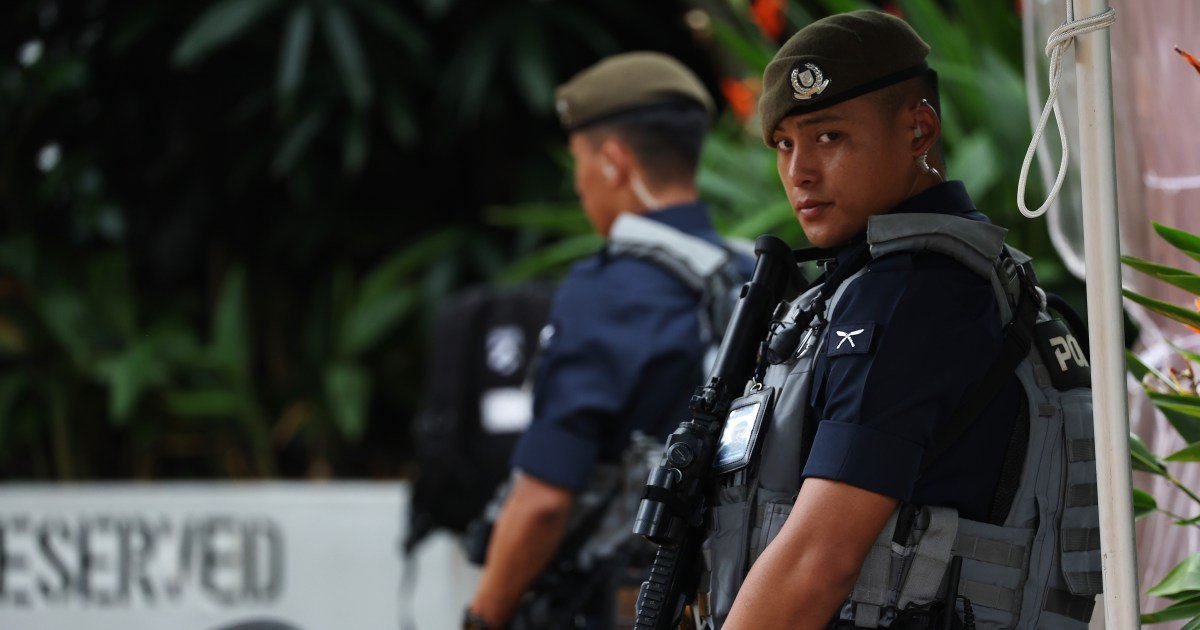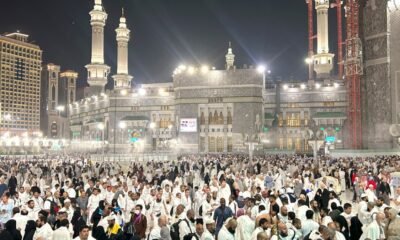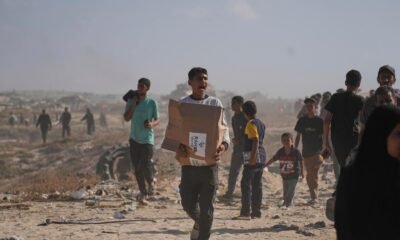Conflict Zones
Pahalgam attack: A simple guide to the Kashmir conflict | Border Disputes News

Islamabad, Pakistan – Pakistan and India continue to engage in war rhetoric and have exchanged fire across the Line of Control (LoC), the de facto border in Kashmir, days after the Pahalgam attack, in which 26 civilians were killed in Indian-administered Kashmir on April 22.
Since then, senior members of Pakistan’s government and military officials have held multiple news conferences in which they have claimed to have “credible information” that an Indian military response is imminent.
This is not the first time South Asia’s two largest countries – which have a combined population of more than 1.6 billion people, about one-fifth of the world’s population – have found themselves under the shadow of potential war.
At the heart of their longstanding animosity lies the status of the picturesque valley of Kashmir, over which India and Pakistan have fought three of their four previous wars. Since gaining independence from British rule in 1947, both countries have controlled parts of Kashmir – with China controlling another part of it – but continue to claim it in full.
So what is the Kashmir conflict all about, and why do India and Pakistan continue to fight over it nearly eight decades after independence?
What are the latest tensions about?
India has implied it believes Pakistan may have indirectly supported the Pahalgam attack – a claim Pakistan strongly denies. Both countries have engaged in tit-for-tat diplomatic swipes at each other, including cancelling visas for each other’s citizens and recalling diplomatic staff.
India has suspended its participation in the Indus Waters Treaty, a water use and distribution agreement with Pakistan. Pakistan has in turn threatened to walk away from the Simla Agreement, which was signed in July 1972, seven months after Pakistan decisively lost the 1971 war that led to the creation of Bangladesh. The Simla Agreement has since formed the bedrock of India-Pakistan relations. It governs the LoC and outlines a commitment to resolve disputes through peaceful means.
On Wednesday, United States Secretary of State Marco Rubio called Pakistani Prime Minister Shehbaz Sharif and Indian External Affairs Minister Subrahmanyam Jaishankar to urge both countries to work together to “de-escalate tensions and maintain peace and security in South Asia”.
US Defense Secretary Pete Hegseth also called Indian Defence Minister Rajnath Singh on Thursday to condemn the attack. “I offered my strong support. We stand with India and its great people,” Hegseth wrote on X.

What lies at the heart of the Kashmir conflict?
Situated in the northwest of the Indian subcontinent, the region spans 222,200 square kilometres (85,800sq miles) with about four million people living in Pakistan-administered Kashmir and 13 million in Indian-administered Jammu and Kashmir.
The population is overwhelmingly Muslim. Pakistan controls the northern and western portions, namely Azad Kashmir, Gilgit and Baltistan, while India controls the southern and southeastern parts, including the Kashmir Valley and its biggest city, Srinagar, as well as Jammu and Ladakh.
The end of British colonial rule and the partition of British India in August 1947 led to the creation of Muslim-majority Pakistan and Hindu-majority India.
At the time, princely states like Jammu and Kashmir were given the option to accede to either country. With a nearly 75 percent Muslim population, many in Pakistan believed the region would naturally join that country. After all, Pakistan under Muhammad Ali Jinnah was created as a homeland for Muslims, even though a majority of Muslims in what remained as India after partition stayed back in that country, where Mahatma Gandhi and independent India’s first prime minister, Jawaharlal Nehru, built the foundations of a secular state.
The maharaja of Kashmir initially sought independence from both countries but later chose to join India after Pakistan invaded, triggering the first war from 1947 to 1948. The ceasefire line established after that was formalised as the LoC in the Simla Agreement.
Despite this, both countries continue to assert claims to the entire region, including, in the case of India, to China-administered Aksai Chin on the eastern side.

What triggered the first Indo-Pakistan war in 1947?
The ruling Hindu maharaja of Kashmir was Hari Singh, whose forefathers took control of the region as part of an agreement with the British in 1846.
At the time of partition, Singh initially sought to retain Kashmir’s independence from both India and Pakistan.
But by then, a rebellion against his rule by pro-Pakistani residents in a part of Kashmir had broken out. Armed groups from Pakistan, backed by the government of the newly formed country, invaded and tried to take over the region.
Sheikh Abdullah, the most prominent Kashmiri leader at the time, opposed the Pakistani-backed attack. Hari Singh appealed to India for military assistance.
Nehru’s government intervened against Pakistan – but on the condition that the maharaja sign an Instrument of Accession merging Jammu and Kashmir with India. In October 1947, Jammu and Kashmir officially became part of India, giving New Delhi control over the Kashmir Valley, Jammu and Ladakh.
India accused Pakistan of being the aggressor in the conflict – a charge Pakistan denied – and took the matter to the United Nations in January 1948. A key resolution was passed stating: “The question of the accession of Jammu and Kashmir to India or Pakistan should be decided through the democratic method of a free and impartial plebiscite.” Nearly 80 years later, no plebiscite has been held – a source of grievance for Kashmiris.
The first war over Kashmir finally ended with a UN-mediated ceasefire, and in 1949, the two countries formalised a ceasefire line under an agreement signed in Karachi, Pakistan’s then-capital. The new line divided Kashmir between Indian- and Pakistani-controlled parts.
How did the situation change after the 1949 agreement?
By 1953, Sheikh Abdullah had founded the Jammu Kashmir National Conference (JKNC) and won state elections in Indian-administered Kashmir.
However, his increasing interest in seeking independence from India led to his arrest by Indian authorities. In 1956, Jammu and Kashmir was declared an “integral” part of India.
In September 1965, less than two decades after independence, India and Pakistan went to war over the region again.
Pakistan hoped to aid the Kashmiri cause and incite a local uprising, but the war ended in a stalemate, with both sides agreeing to a UN-supervised ceasefire.
How did China get a part of Kashmir?
The Aksai Chin region in the northeast of the region sits at an elevation of 5,000 metres (16,400 feet), and through history, was a hard-to-reach, barely inhabited territory that in the 19th and early 20th centuries sat at the border of British India and China.
It was a part of the kingdom that Kashmir’s Hari Singh inherited as a result of the 1846 deal with the British. Until the 1930s, at least, Chinese maps too recognised Kashmir as being south of the Ardagh-Johnson Line that marked the northeastern boundary of Kashmir.
After 1947 and Singh’s accession to India, New Delhi viewed Aksai Chin as part of its territory. But by the early 1950s, China – now under communist rule – built a massive 1,200km (745-mile) long highway connecting Tibet and Xinjiang, and running through Aksai Chin.
India was caught unaware – the desolate region had not been a security priority until then. In 1954, Nehru called for the border to be formalised according to the Ardagh-Johnson Line – in effect, recognising Aksai Chin as a part of India.
But China insisted that the British had never discussed the Ardagh-Johnson Line, and that Aksai Chin belonged to it under an alternate map. Most importantly, though, China already had boots on the ground in Aksai Chin because of the highway.
Meanwhile, Pakistan and China also had differences over who controlled what in parts of Kashmir. But by the early 1960s, they reached an agreement: China gave up grazing grounds that Pakistan had sought, and in return, Pakistan ceded a thin slice of northern Kashmir to China.
India claims this deal was illegal since, according to the Instrument of Accession of 1947, all of Kashmir belonged to it.
Back to India and Pakistan: What happened next?
Another war followed in December 1971 – this time over what was then known as East Pakistan, following a popular revolt by India-backed Bengali nationalists against Pakistan’s rule. The war led to the creation of Bangladesh. More than 90,000 Pakistani soldiers were captured by India as prisoners of war.
The Simla Agreement converted the ceasefire line into the LoC, a de facto but not internationally recognised border, yet again leaving Kashmir’s status in question.
But after India’s decisive 1971 victory and amid the growing political influence of Prime Minister Indira Gandhi – Nehru’s daughter – the 1970s saw Abdullah abandon his demand for a plebiscite and the Kashmiri people’s right of self-determination.
In 1975, he signed an accord with Gandhi, recognising India-administered Kashmir’s accession to India while retaining semi-autonomous status under Article 370 of the Indian Constitution. He later served as the region’s chief minister.
What led to a renewed drive for Kashmiri independence in the 1980s?
As ties grew between Abdullah’s National Conference Party and India’s ruling Indian National Congress, so did frustration among Kashmiris in India-controlled Kashmir, who felt that socioeconomic conditions had not improved in the region.
Separatist groups like the Jammu-Kashmir Liberation Front, founded by Maqbool Bhat, rose.
India’s claims of democracy in Kashmir faltered in the face of growing support for the armed groups. A tipping point was the 1987 election to the state legislature, which saw Abdullah’s son, Farooq Abdullah, come to power, but which was widely viewed as heavily rigged to keep out popular, anti-India politicians.
Indian authorities launched a severe crackdown on separatist groups, which New Delhi alleged were supported and trained by Pakistan’s military intelligence. Pakistan, for its part, has consistently maintained it provides only moral and diplomatic support, backing the Kashmiris’ “right to self-determination”.
In 1999, conflict erupted in Kargil, where Indian and Pakistani forces fought for control over strategic heights along the LoC. India eventually regained the lost territory, and the pre-conflict status quo was restored. This was the third war over Kashmir – Kargil is a part of Ladakh.
How have tensions over Kashmir escalated since then?
The following years saw a gradual reduction in direct conflict, with multiple ceasefires signed. However, India significantly ramped up its military presence in the valley.
Tensions were reignited in 2016 after the killing of Burhan Wani, a popular separatist figure. His death led to a rise in violence in the valley and more frequent exchanges of fire along the LoC.
Major attacks in Indian-administered Kashmir, including those in Pathankot and Uri in 2016, targeted Indian forces, who blamed Pakistan-backed armed groups.
The most serious escalation came in February 2019 when a convoy of Indian paramilitary personnel was attacked in Pulwama, killing 40 soldiers and bringing the two nations to the brink of war.
Six months later, the Indian government under Prime Minister Narendra Modi unilaterally abrogated Article 370, stripping Jammu and Kashmir of its semi-autonomous status. Pakistan condemned the move as a violation of the Simla Agreement.
The decision led to widespread protests in the valley. India deployed 500,000 to 800,000 soldiers, placed the region under lockdown, shut down internet services and detained thousands of people.
India insists that Pakistan is to blame for the ongoing crisis in Kashmir. It accuses Pakistan of hosting, financing and training the Pakistan-based armed groups that have claimed responsibility for multiple attacks in Indian-administered Kashmir over the decades. Some of these groups are also accused by India, the US, and others of attacking other parts of India – such as during the 2008 attack on Mumbai, India’s financial capital, when at least 166 people were killed over three days.
Pakistan continues to deny that it fuels violence in India-controlled Kashmir and instead points to widespread resentment among locals, accusing India of imposing harsh and undemocratic rule in the region. Islamabad says it only supports Kashmiri separatism diplomatically and morally.
Conflict Zones
Sudan Paramilitary Claims Key Gains in Kordofan; Fighting Intensifies Near Khartoum

Khartoum, May 30, 2025 — Rapid Support Forces (RSF) deputy leader Abdel Rahim Daglo announced on Friday that RSF fighters would press their eastward advance toward Khartoum, claiming “great victories” in several strategic towns across Kordofan. Addressing troops at an undisclosed location, Daglo said that all armed groups within the Tasis coalition had joined his paramilitary ranks and were now operating in concert with the RSF.
According to Daglo, RSF units seized control of Al-Dubaibat and Al-Hammadi in South Kordofan state, as well as Al-Khawi in neighboring West Kordofan. “Our fighters have secured these areas after intense clashes with Sudanese Armed Forces (SAF) units and allied militias,” Daglo declared, adding that the momentum would not wane until the capital was within reach.
Sudan’s army, however, downplayed recent RSF advances as part of a “reorganization” campaign. A senior ally of the SAF—also the governor of Darfur—insisted that the military was regrouping and fortified its positions to counter what he described as “a temporary setback.” He maintained that the SAF’s strategic reserves remained intact and that front-line forces were being repositioned to mount a sustained defense of Khartoum.
As fighting has spread northward, the humanitarian situation in Khartoum has deteriorated sharply. With basic services all but collapsed, a deadly cholera outbreak has emerged in the densely populated capital. Aid agencies warn that the impending rainy season could exacerbate sanitation challenges, fueling further disease transmission. The United Nations has labeled the crisis “the world’s worst humanitarian emergency,” citing over 25,000 confirmed deaths and more than 3 million internally displaced persons since April.
International pressure has also mounted on Sudan’s transitional government. In late May, Washington imposed sanctions on Sudanese military leaders for the “alleged use of chemical weapons” against civilians. In response, the government announced a national investigation into the claims—a move it said was aimed at preserving Sudan’s international standing amid intensifying conflict.
With both sides entrenching their positions around Khartoum, observers warn that a protracted stalemate could unleash further civilian suffering. The RSF’s pledge to advance eastward has raised concerns that front-line engagements may spill into densely populated suburbs, where millions have already endured weeks of intermittent shelling and aerial bombardments. For now, the fate of Khartoum—and the broader prospects for peace—remain uncertain as paramilitary and army forces brace for a decisive showdown.
Conflict Zones
Two killed in Russian attacks on Ukraine before possible talks in Turkiye | Russia-Ukraine war News

Russia has confirmed it will send a delegation to Istanbul, but Kyiv has not yet accepted the proposal.
Russian drone and missile attacks on Ukraine have killed at least two people, according to officials, as Ukraine ordered the evacuation of 11 more villages in its Sumy region bordering Russia.
Russian troops launched an estimated 109 drones and five missiles across Ukraine on Friday and overnight, the Ukrainian air force said on Saturday, adding that three of the missiles and 42 drones were destroyed and another 30 drones failed to reach their targets without causing damage.
The attacks came amid uncertainty over whether Kyiv will take part in a new round of peace talks early next week in Istanbul.
In the Russian attacks on Saturday, a child was killed in a strike on the front-line village of Dolynka in the Zaporizhia region, and another was injured, Zaporizhia’s Governor Ivan Fedorov said.
“One house was destroyed. The shockwave from the blast also damaged several other houses, cars, and outbuildings,” Fedorov wrote on Telegram.
A man was also killed by Russian shelling in Ukraine’s Kherson region, Governor Oleksandr Prokudin wrote on Telegram.
Moscow did not comment on either attack.
Meanwhile, authorities in Ukraine’s Sumy region said they were evacuating 11 villages within a roughly 30-kilometre (19-mile) range from the Russian border.
“The decision was made in view of the constant threat to civilian life as a result of shelling of border communities,” the regional administration said on social media.
Ukrainian President Volodymyr Zelenskyy has said some 50,000 Russian troops have amassed in the area with the intention of launching an offensive to carve out a buffer zone inside Ukrainian territory.
Ukraine’s top army chief, Oleksandr Syrskii, said on Saturday that Russian forces were focusing their main offensive efforts on Pokrovsk, Torets and Lyman in the Donetsk region, as well as the Sumy border area.
Syrskii added that Ukrainian forces are still holding territory in Russia’s Kursk region – a statement Moscow has repeatedly denied.
The evacuations and attacks came just two days before a possible meeting between Kyiv and Moscow in Istanbul, as Washington called on both countries to end the three-year war.
Russia has confirmed it will send a delegation, but Kyiv has not yet accepted the proposal, warning the talks would not yield results unless the Kremlin provided its peace terms in advance.
Zelenskyy said Saturday it was still not clear what Moscow was planning to achieve at the meeting and that so far, it did not “look very serious”.
Conflict Zones
Hegseth warns of China threat as Beijing’s top brass skip Singapore summit | Military News

Singapore – Of the many military officials darting across the lobby of Singapore’s Shangri-La Hotel this weekend, there has been one significant absence.
China’s Defence Minister Dong Jun skipped the annual Shangri-La Dialogue, Asia’s premier security forum, with Beijing sending a delegation of lower-ranking representatives instead.
It was the first time since 2019 that China has not dispatched its defence minister to the high-level dialogue on regional defence, except when the event was cancelled in 2020 and 2021 due to the COVID-19 pandemic.
Beijing’s decision raised eyebrows in Singapore, coming at a time of heightened tensions between China and the United States – the world’s two biggest superpowers.
Dong’s absence meant there was no face-to-face meeting with his US counterpart, Secretary of Defence Pete Hegseth, who had the floor to himself on Saturday when he told the defence forum that the military threat posed by China was potentially imminent.
“It has to be clear to all that Beijing is credibly preparing to potentially use military force to alter the balance of power in the Indo-Pacific,” Hegseth told delegates in Singapore.
Pointing to China’s regular military drills around Taiwan as well as increasingly frequent skirmishes in the South China Sea, Hegseth said Beijing was proactively harassing its neighbours.
“There’s no reason to sugar-coat it. The threat China poses is real, and it could be imminent,” Hegseth said.
He also pointed to China’s growing military assertiveness as a reason for Asian nations to boost their defence spending, pointing to Germany, which has pledged to move towards spending 5 percent of its gross domestic product (GDP) on defence.
“It doesn’t make sense for countries in Europe to do that while key allies in Asia spend less on defence in the face of an even more formidable threat,” Hegseth said.
The defence chief also looked to reassure Asian allies that Washington was committed to Asia Pacific security despite strained ties in recent months as US President Donald Trump targeted some close allies with hefty trade tariffs.
“America is proud to be back in the Indo-Pacific, and we’re here to stay,” he said, opening his speech.
Some analysts were quick to play down the severity of Hegseth’s warnings about China.
“Short of a very few countries, not many in this part of the world see China as an imminent threat and would up their [defence] spending,” said Dylan Loh, assistant professor in the public policy and global affairs programme at Singapore’s Nanyang Technological University.
China tight-lipped on defence chief’s absence
In previous years, the Shangri-La Dialogue had provided a rare platform for meetings between Chinese and US officials in the more informal surroundings that the summit could offer.
The structure of the schedule also allowed Beijing’s military chiefs to directly respond to the keynote speech from the US defence secretary and to present their narrative to other members of the Asia Pacific.
Beijing has remained tight-lipped on the reason for Defence Minister Dong’s absence from the forum, fuelling an information void that has been filled by speculation.
One theory is that China did not want to send a high-profile delegate to the event at such a sensitive time as Beijing navigates the tariff war with the Trump administration.
“Any sort of faux pas or comments that may go off script can be picked up and picked apart or misconstrued,” said Loh, of Singapore’s Nanyang Technological University.
“So the question is why take the risk when US-China relations are at a very delicate point at this moment,” Loh told Al Jazeera.

The Shangri-La Dialogue weekend has not always been the easiest occasion for Chinese defence ministers. In recent years, they have faced difficult questions from their counterparts in other countries, who are unhappy with Beijing’s increasing assertiveness in the Asia Pacific region.
Loh said this could be another factor in Dong’s absence from the high-profile event.
“Any Chinese defence minister coming to Singapore now will be exposing himself and the country to political risk,” he said. “Themes like the South China Sea and possibly Taiwan will emerge, which makes China a convenient target,” Loh added.
Dong was appointed as China’s defence minister in late 2023, after his predecessor, Li Shangfu, was removed from office.
Less than a year into the job, there was speculation surrounding Dong’s new position following media reports that he was under investigation as part of a wider investigation into corruption in the Chinese military. Beijing denied the reports, with the minister continuing to maintain a public profile despite the allegations.
There has also been intense scrutiny of China’s military, following reports of an apparent purge of top-level officials by President Xi Jinping.
One of Beijing’s most senior generals, He Weidong, was missing from a high-profile political meeting in April, adding to rumours surrounding a possible restructuring in the People’s Liberation Army (PLA).
Ian Chong, a nonresident scholar at the Carnegie China research centre, said such speculation could be a factor in Dong’s no-show in Singapore.
“Because of the domestic turmoil with China’s senior military, they perhaps don’t want to, or the PLA itself feels that it’s not in a position to send somebody senior,” Chong told Al Jazeera.
Announcing Dong’s absence at a news conference before the summit, Chinese military spokesperson Senior Colonel Zhang Xiaogang maintained that communication channels were still open between defence officials in Washington and Beijing.
“China places great importance on US-China military ties, and is open to communication at different levels,” Zhang said.
-

 Africa4 days ago
Africa4 days agoSurvivor of Liverpool car ramming talks of shock and panic
-

 Sports3 days ago
Sports3 days agoThe Knicks are bringing hope and title dreams back to New York after years in the doldrums
-

 Lifestyle3 days ago
Lifestyle3 days agoChildren and careers: Talking to kids about what they want to be when they grow up
-

 Lifestyle4 days ago
Lifestyle4 days agoHow to decorate a patio, balcony or other small outdoor space
-

 Lifestyle3 days ago
Lifestyle3 days agoFaizan Zaki hopes to go from spelling bee runner-up to champ
-

 Middle East4 days ago
Middle East4 days agoHajj pilgrimage in Saudi Arabia to begin on June 4 | Religion News
-

 Middle East4 days ago
Middle East4 days agoGaza’s aid system isn’t broken. It’s working exactly as designed | Humanitarian Crises
-

 Europe5 days ago
Europe5 days agoMacron’s marital shove disappears from French airwaves




